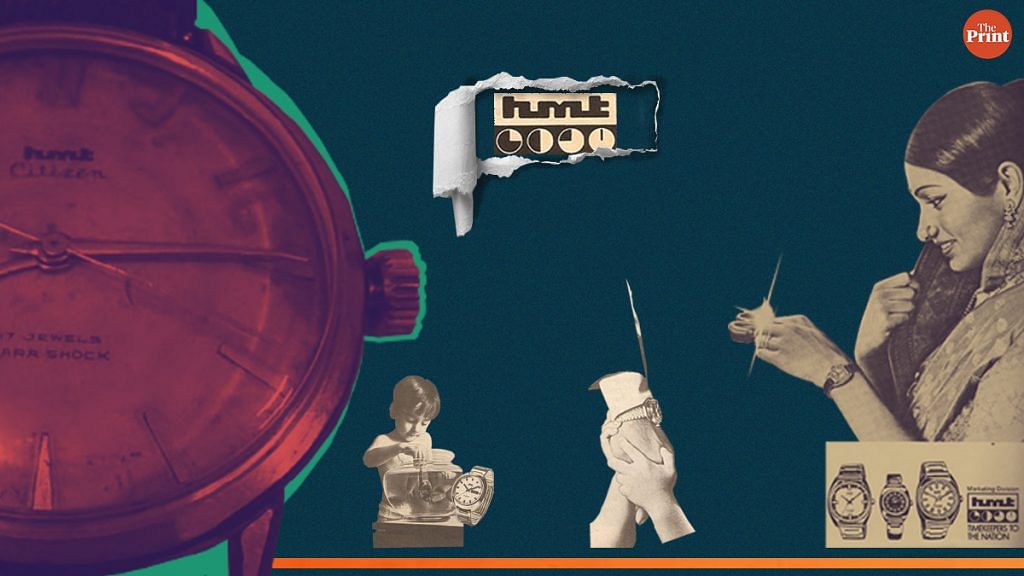HMT’s catchy advertising campaign centred on the ‘unity in diversity’ theme.
Which Indian Prime Minister released the first set of hand-wound watches?
Jawaharlal Nehru. And, the watch brand was HMT.
How many of you remember the iconic HMT watch touted as the desh ki dhadkan (the heartbeat of the nation), and its vibrant and aggressive advertising campaign in the print and electronic media?
For India’s young, the brand has little or no connect but for all those who grew up in the 1980s and 1990s, an HMT watch was a must-have. The brand HMT was associated with achievement, national pride and functionality. It was, after all, a time when the wristwatch was an inalienable accessory – unlike the waning popularity of wrist watches today when cell phones have become alter-watches.
One of the earliest, black-and-white documentary films on HMT watches was called “Time is HMT Time”.
Over the years, the HMT brand got propelled into the national consciousness by an extremely well-thought-out and catchy advertising campaign, which subtly reflected India’s social and regional diversity.
The television ad captured the socialist nation-building decades with a melodious rendition underlining India’s ‘unity in diversity’ template – yeh aaj apna, yeh kal apna, har pal apna, yeh log apne, yeh desh apna, dhadkan apna. The ad was not only a riotous celebration of colours, but deftly crafted the Indian demography and diversity, both urban and rural.
Harish Bijoor, a Bengaluru-based brand consultant, says that the watch was a time-keeping “machine” during the 1970s and 80s, meant for all Indians who were seeking functionality along with cost.
The HMT watches, with affordable prices, dominated the Indian market till the end of 1990s. Hindustan Machine Tools, the makers of the HMT watch, was incorporated as a public sector company in 1953. It began as a machine tool manufacturing company but diversified into various other products, including watches, tractors and even printing machines. The watch manufacturing division was set up in 1961 in collaboration with M/s Citizen Watch Co. of Japan. By 1985, it started making solar clocks and even tower clocks.
“The watch was designed for the rough and tough environment, when most Indians would take public transport. So, the product had to be sturdy and it had nothing to do with cosmetic orientation,” Bijoor recalls.
The tagline — Pulse of the nation – caught on with Indians. One television ad was a montage of images, beautifully essaying the happiness of an expectant couple, a bride and a groom receiving a ‘his and hers’ watch set, a dance class, a father teaching his daughter to ride a bicycle, and a classical vocalist singing ragas by the Taj Mahal.
Some other famous taglines were “If you have the inclination, we have the time” and “timekeepers to the nation”.
There was a sense of “positivity and hope” in the HMT ads, recalls another brand strategist.
In 2000, HMT’s watch business was restructured and rechristened HMT Watches Limited, which became a wholly owned subsidiary of HMT Limited. Ironically, the original timekeeper of the country could not keep pace with the changing times. Sturdy lost out to the post-liberalisation love for sleek and sophisticated.
“Quartz watches made their way into the market, and HMT joined the wagon late. Titan from the Tata Group also took on the market with its fashionable designs. Titan was all about designs, it was okay not to be sturdy. After all, your jewellery is not sturdy, and that caught India’s attention. It was almost an instant success,” Bijoor says.
“HMT continued to remain a quintessential public sector enterprise, losing time and opportunity to change,” Bijoor points out. In just a few years, the market changed dramatically. The government finally decided to shut it down in September 2014.
But to keep the clock ticking, HMT now plans to open a museum in Bengaluru.
